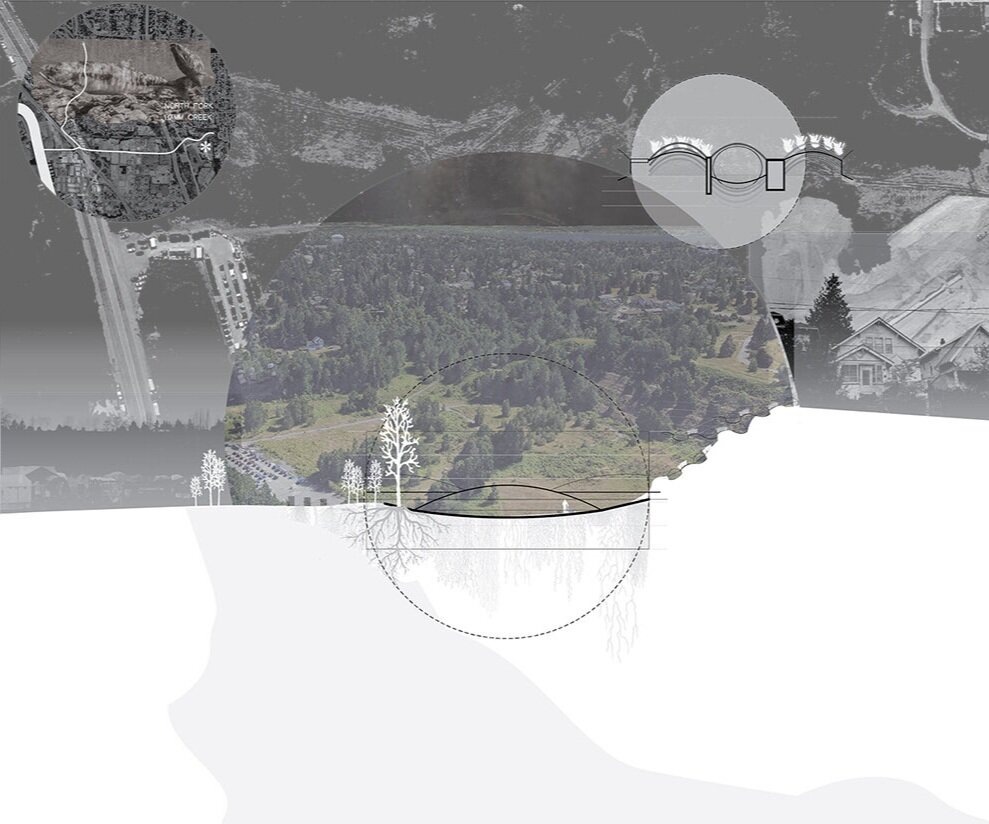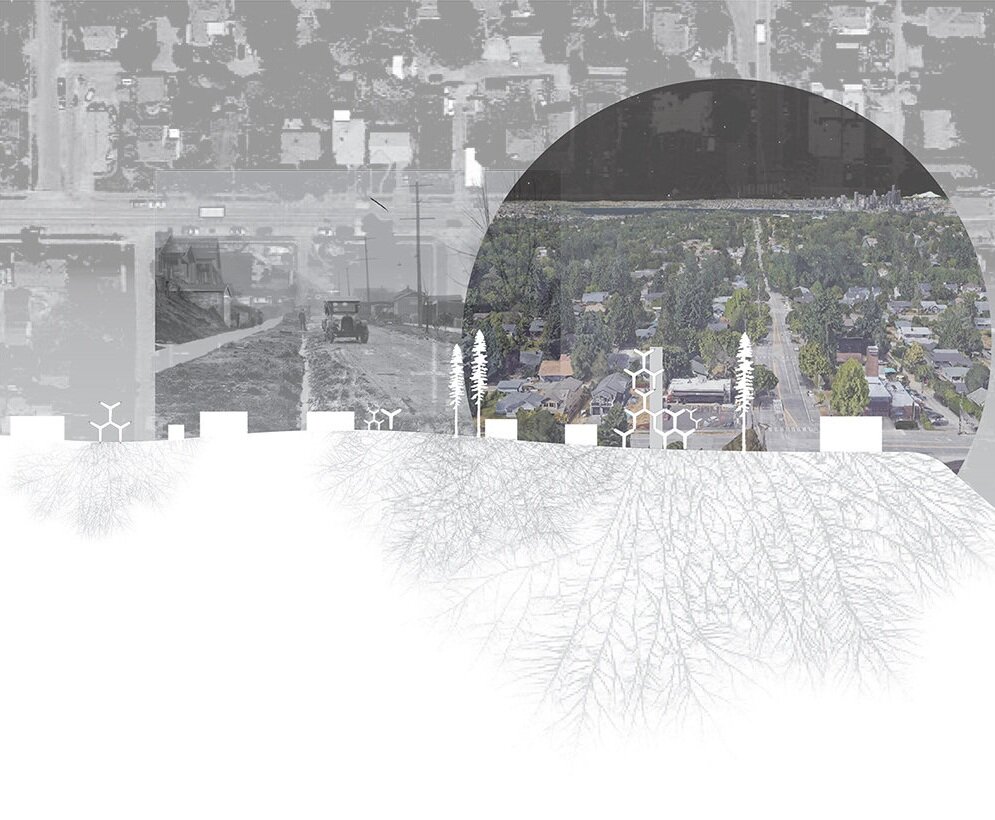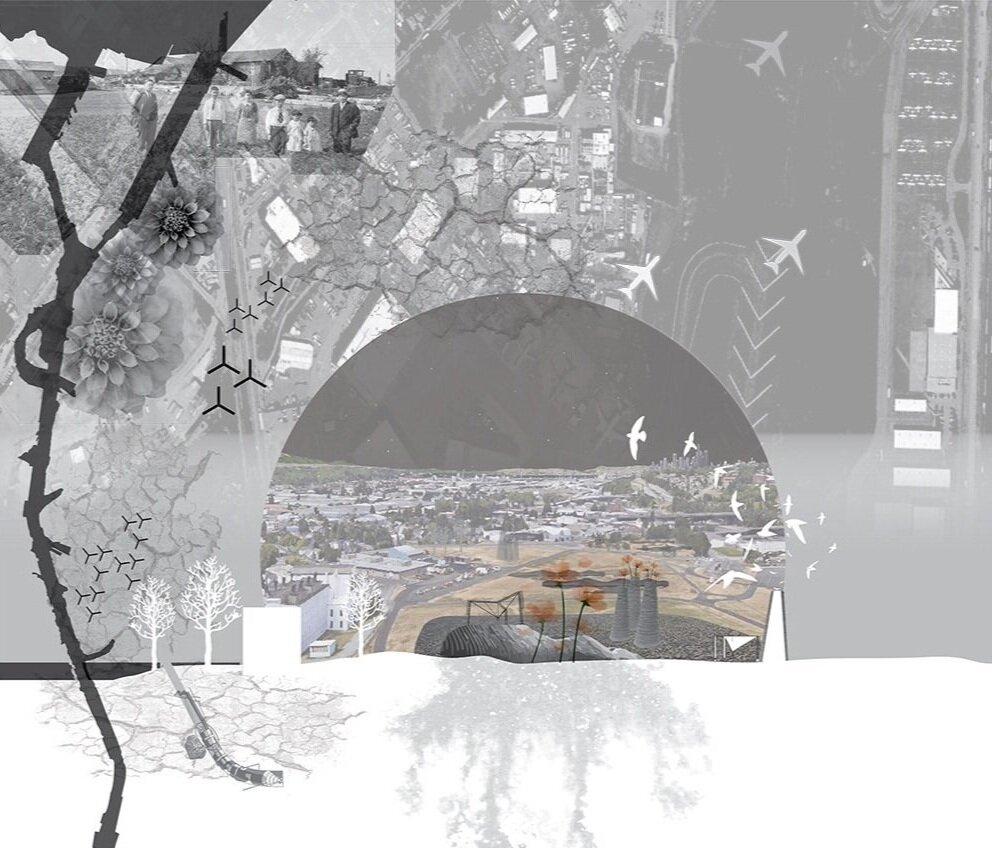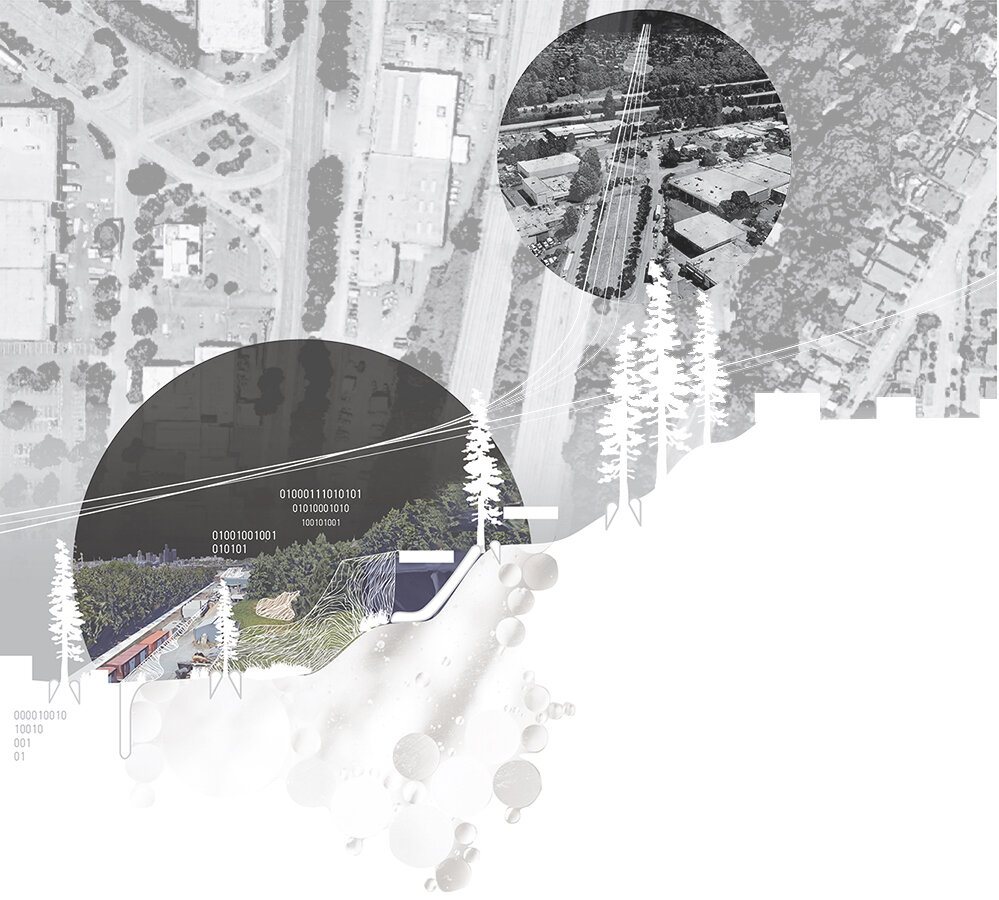soilcraft: a necessary fiction | stevie koepp
Photomicrographs of common microartifacts in urban soils (Howard and Orlicki, 2016)
Machines, humans, and microscopic critters are the unwitting collaborative makers of urban soils, termed “technosols” by the World Reference Base for Soils (2006). These living, flexible, semi-synthetic, biological assemblages are further qualified by the type of garbage they contain— for instance: urbic for manufactured objects, garbic for organics, and spolic for mine spoils.
Conceptual representation of soil formation in Seattle’s urbanized Duwamish watershed
If technosols are an accidental outcome of the built environment, what kinds of soils could be crafted with care?
Soilcraft work posits what Maria Puig de la Bellacasa has proposed as a “care approach” (2018) to earthen life, “making kin” with microbia in the words of post-humanist Donna Harraway (2016) and seeking “mutually beneficial interspecies living” per anthropologist Anna Tsing (2012). Research into the formation of soil and its naming reveals critical nonhuman microbial processes and a diversity of historic human soil cultivation practices working alongside each other to transform wastes. An original classification system inspired by this finding aims to describe soil types that could develop from human and microbe interactions in contaminated places.
Speculative prototypes for soil making —or, terraforming— function as artifacts of the possible futures described by this nomenclature. Each object physically engages microbial actors (ie. algae, fungi, and bacteria) to build a visual narrative of the more-than-human world they belong to. The material properties of nourishing, carbon-based inputs are tested to bend inert architectural realities.
Five terraforming apparatuses in development (left to right): algae tetraforms, bacterial cellulose specularia, mycelial mushmesh, anaerobic earthbots, and wormy nemaknits
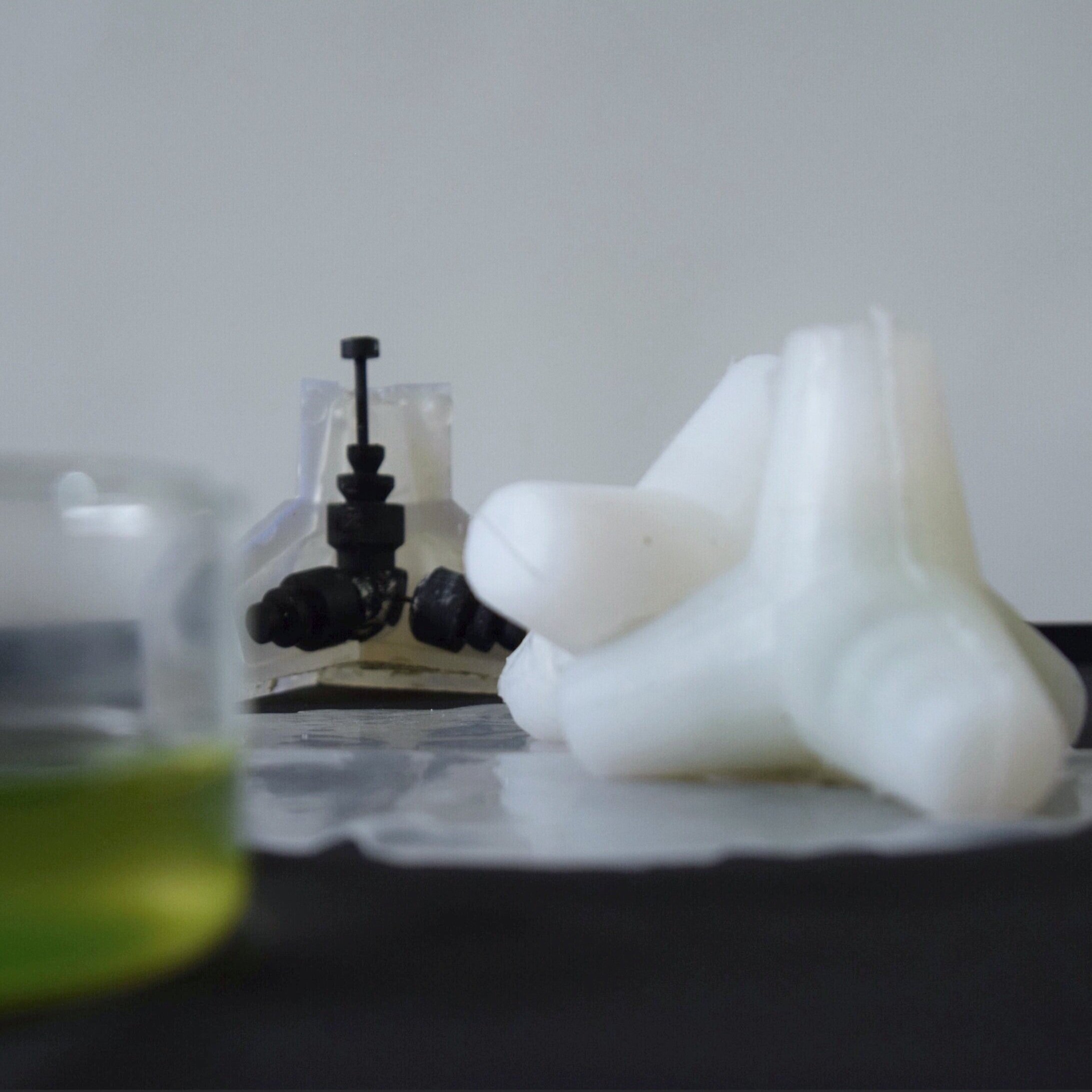
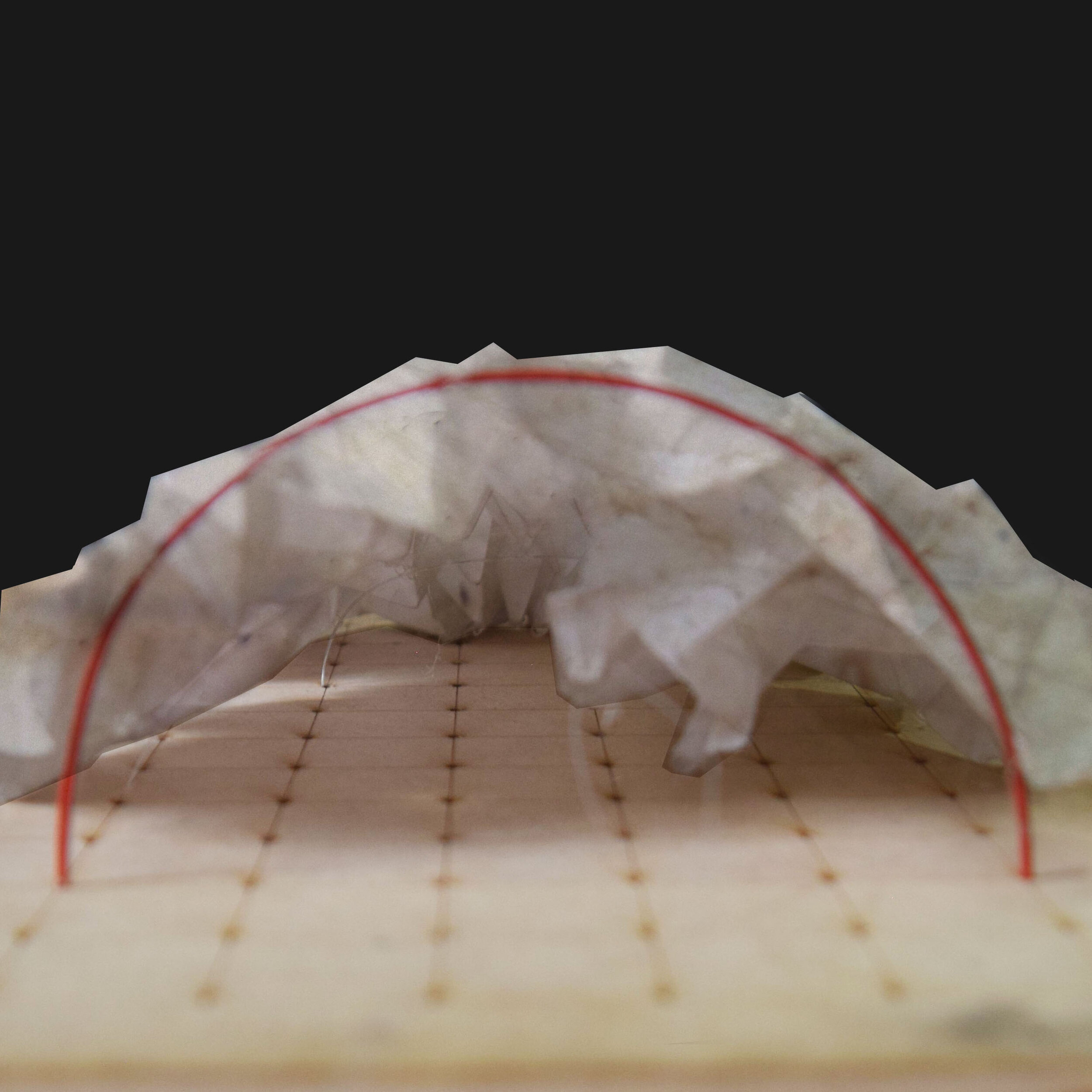
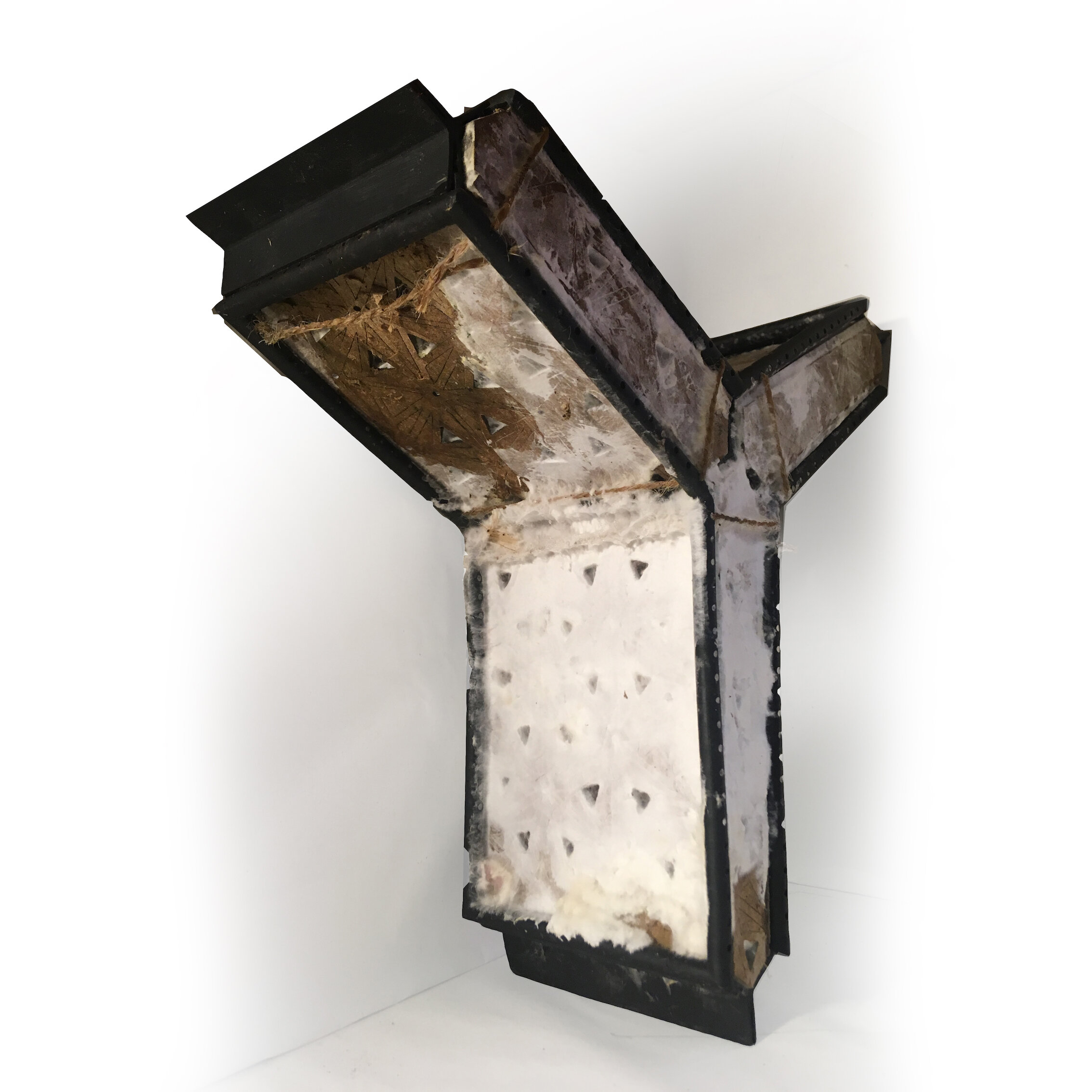
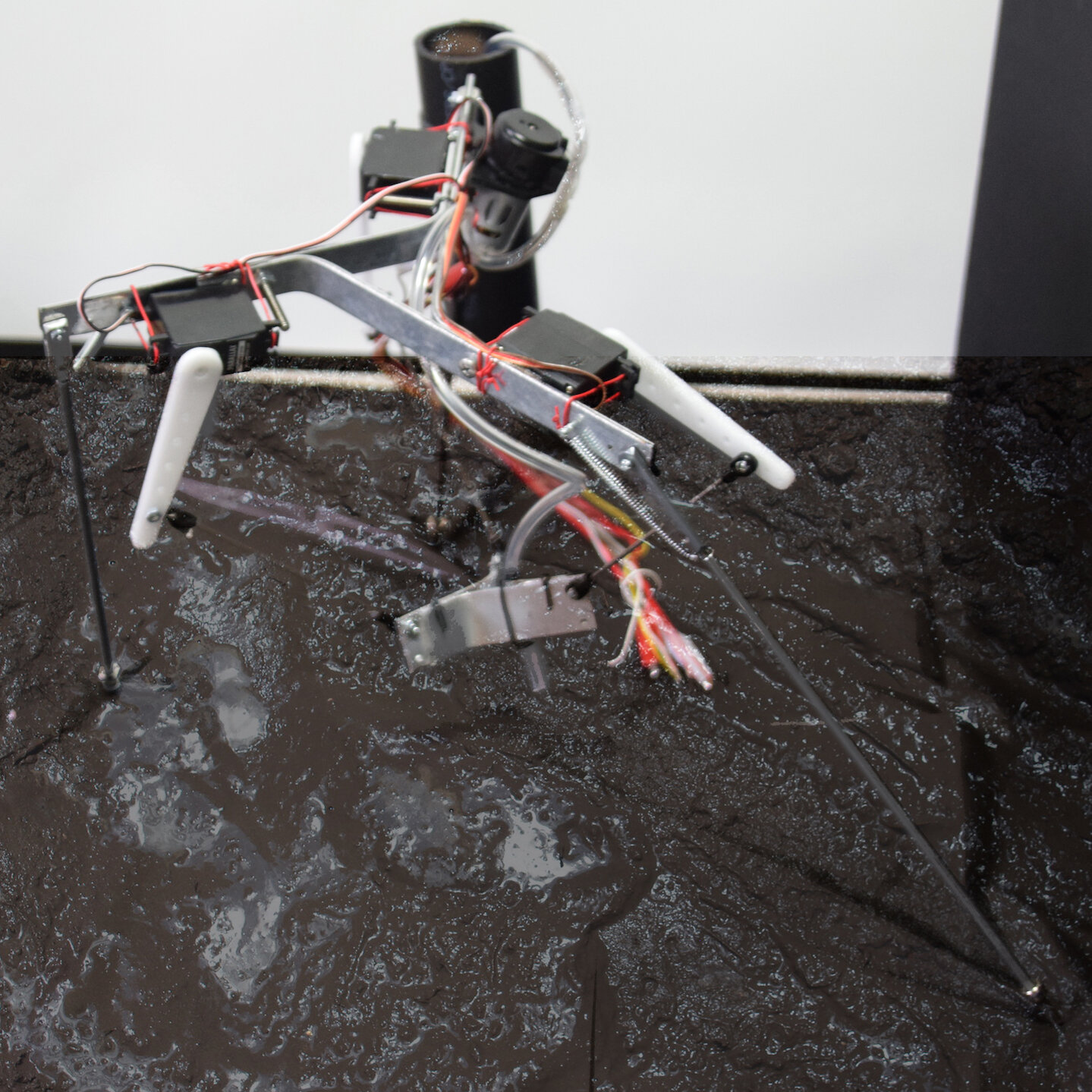
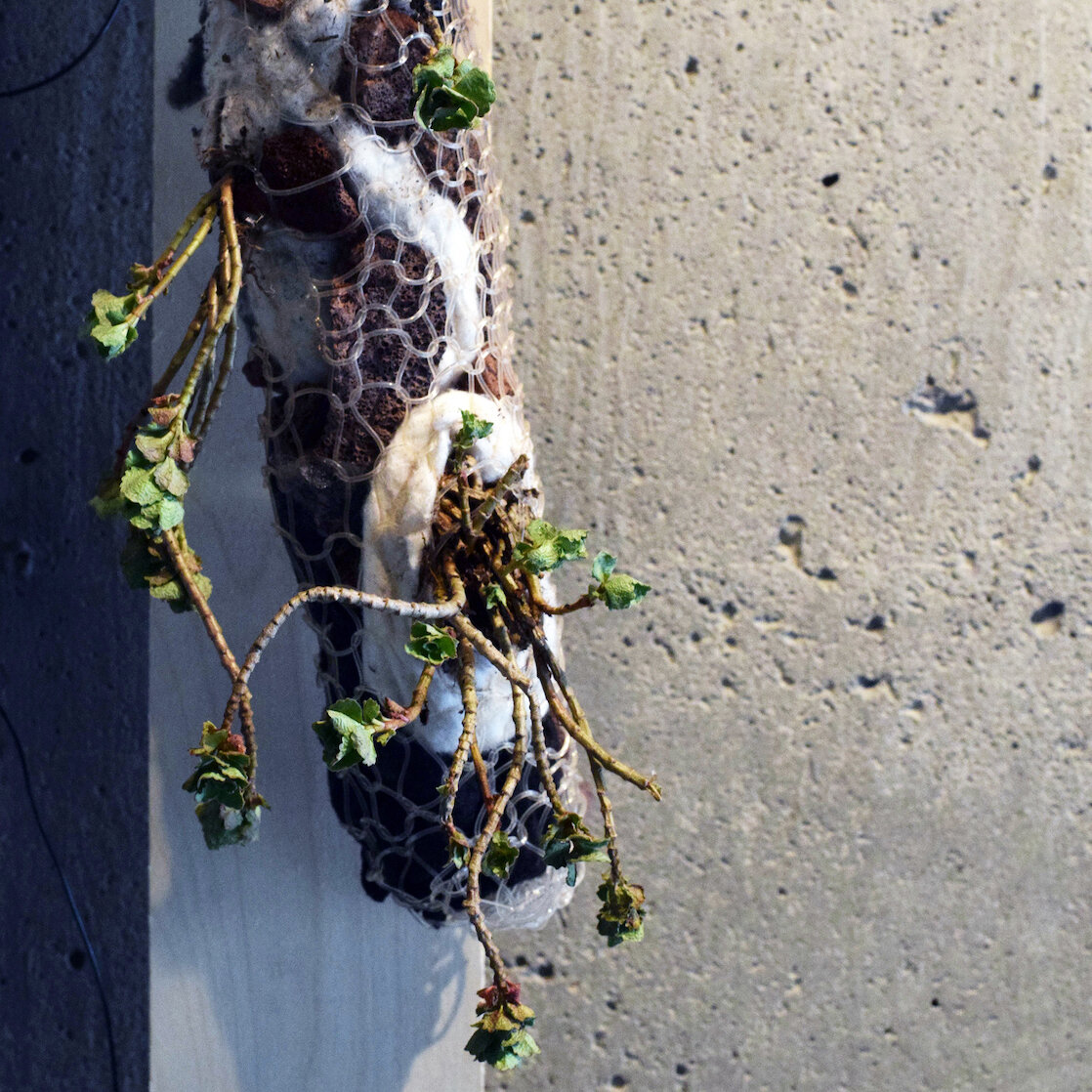
Together, the objects begin to describe a grunge brown world rich with fecundity and intermingling life at its edges. Synthesizing tetraforms concretize from algae and biopolymeric membranes to aggregate symterric soils. Cloth specularia breathe with the rhizosphere to regulate atmospheric carbon in pneuplaggic soils. Earthbots— deployable units for the additive manufacturing of fertile biopretic substrates— roam, artfully distributing biosolids. Organic waste residues feed flourishing microbial consortiums across a transect of leftover spaces, connecting human life with transformative, biogeochemical processes making other life more possible.
Soilcraft is a necessary fiction, a noun, and a verb. In my imagination it is also a movement— away from hopeless wasteland narratives toward playful, multispecies soil making in an epoch of mass extinction.
link here to access full thesis
Committee
Gundula Proksch — UW Architecture
Thaisa Way — UW Landscape Architecture
Afroditi Psarra — UW DXARTS
References
World Reference Base for Soil Resources, 2006 ed.: A Framework for International Classification, Correlation and Communication. Rome: Food and Agriculture Organization of the United Nations, 2006.
Haraway, Donna Jeanne. Staying with the Trouble : Making Kin in the Chthulucene. Durham: Duke University Press, 2016.
Howard, Jeffrey L., and Orlicki, Katharine M. "Composition, micromorphology and distribution of microartifacts in anthropogenic soils, Detroit, Michigan, USA." CATENA, 138 (2012):103-116.
Puig de la Bellacasa, María. Matters of Care : Speculative Ethics in More Than Human Worlds. Minneapolis, MN: University of Minnesota Press, 2017.
Tsing, Anna. "Unruly Edges: Mushrooms as Companion Species." Environmental Humanities 1 (2012): 141-54.








